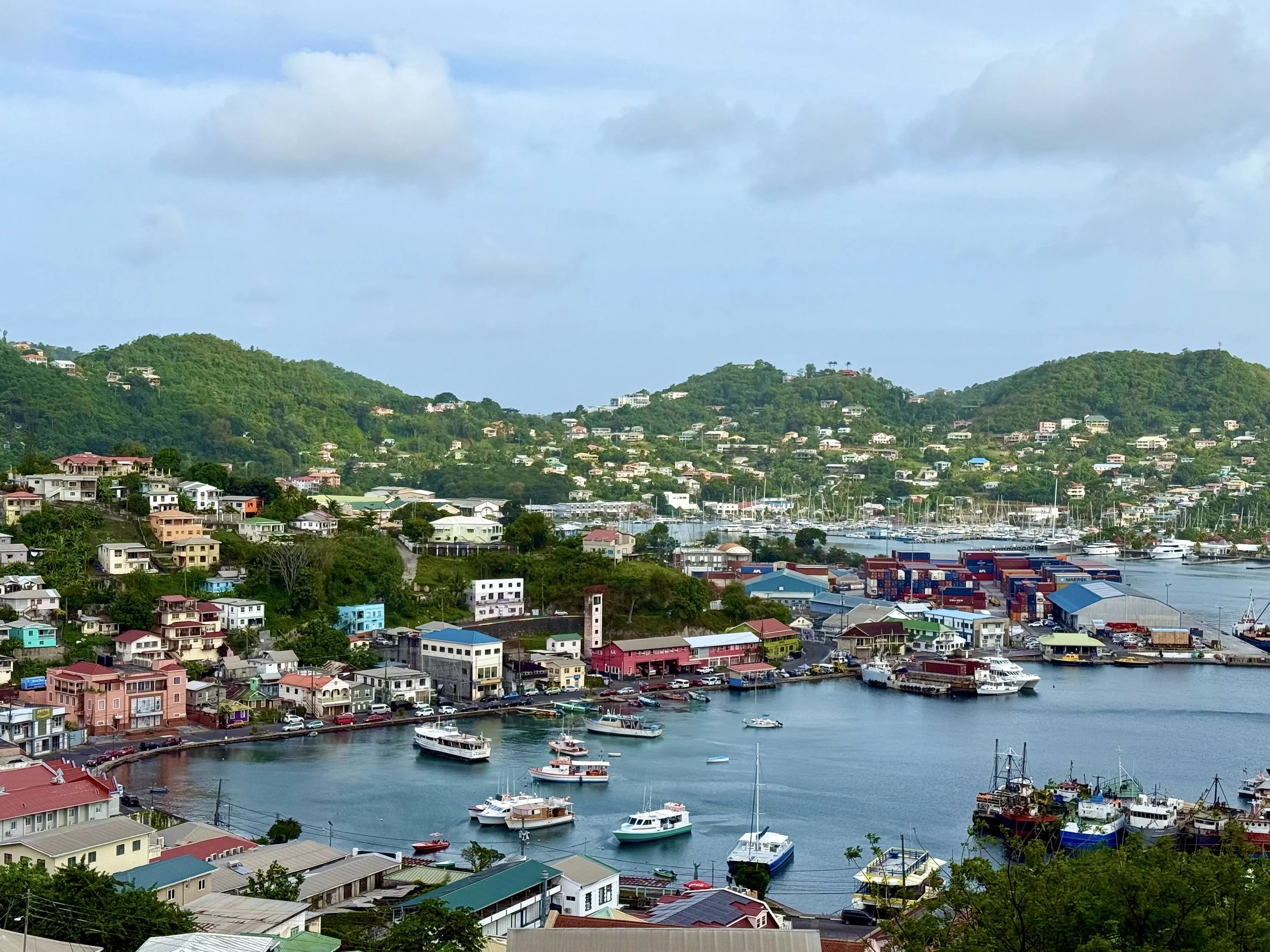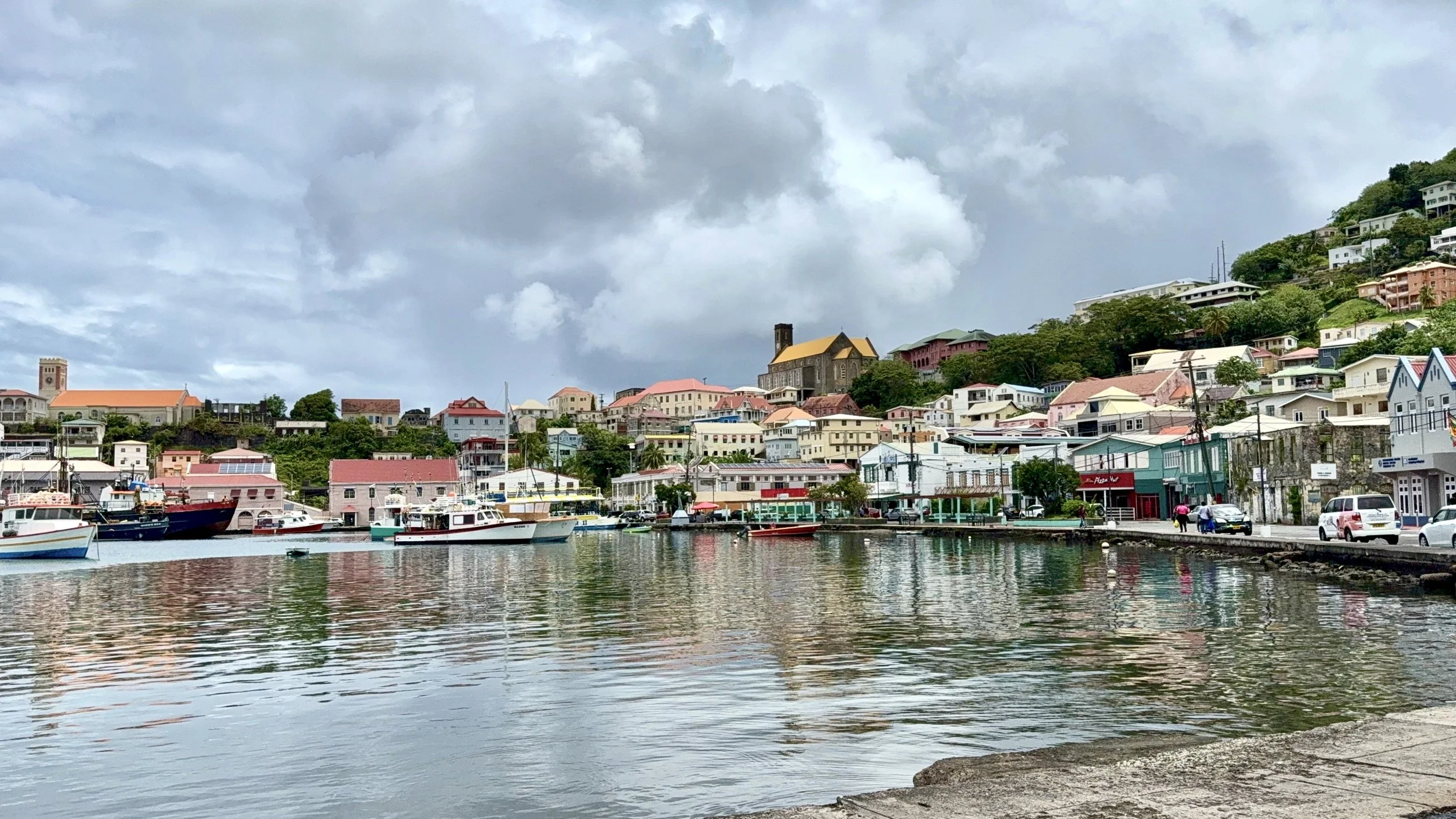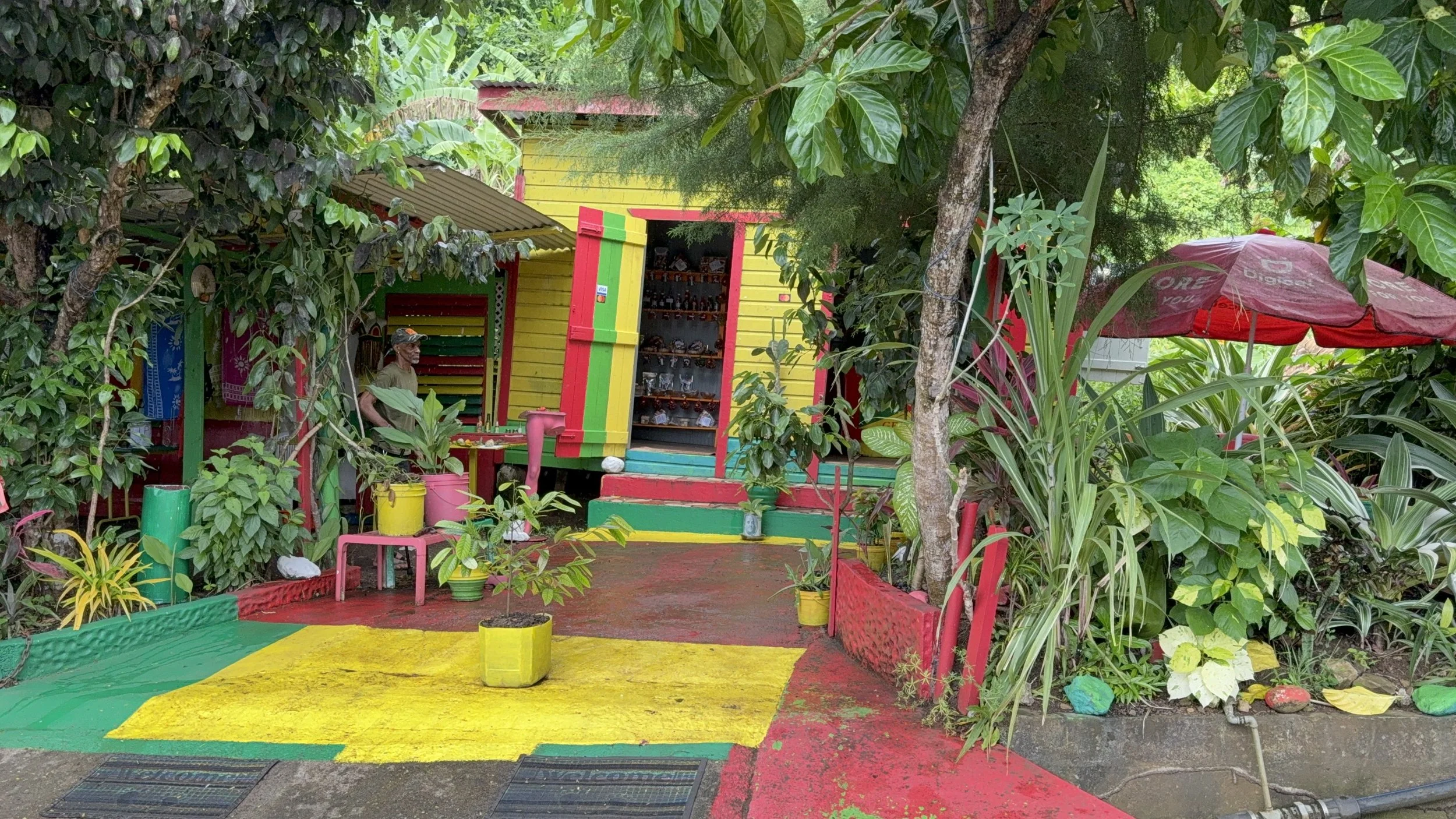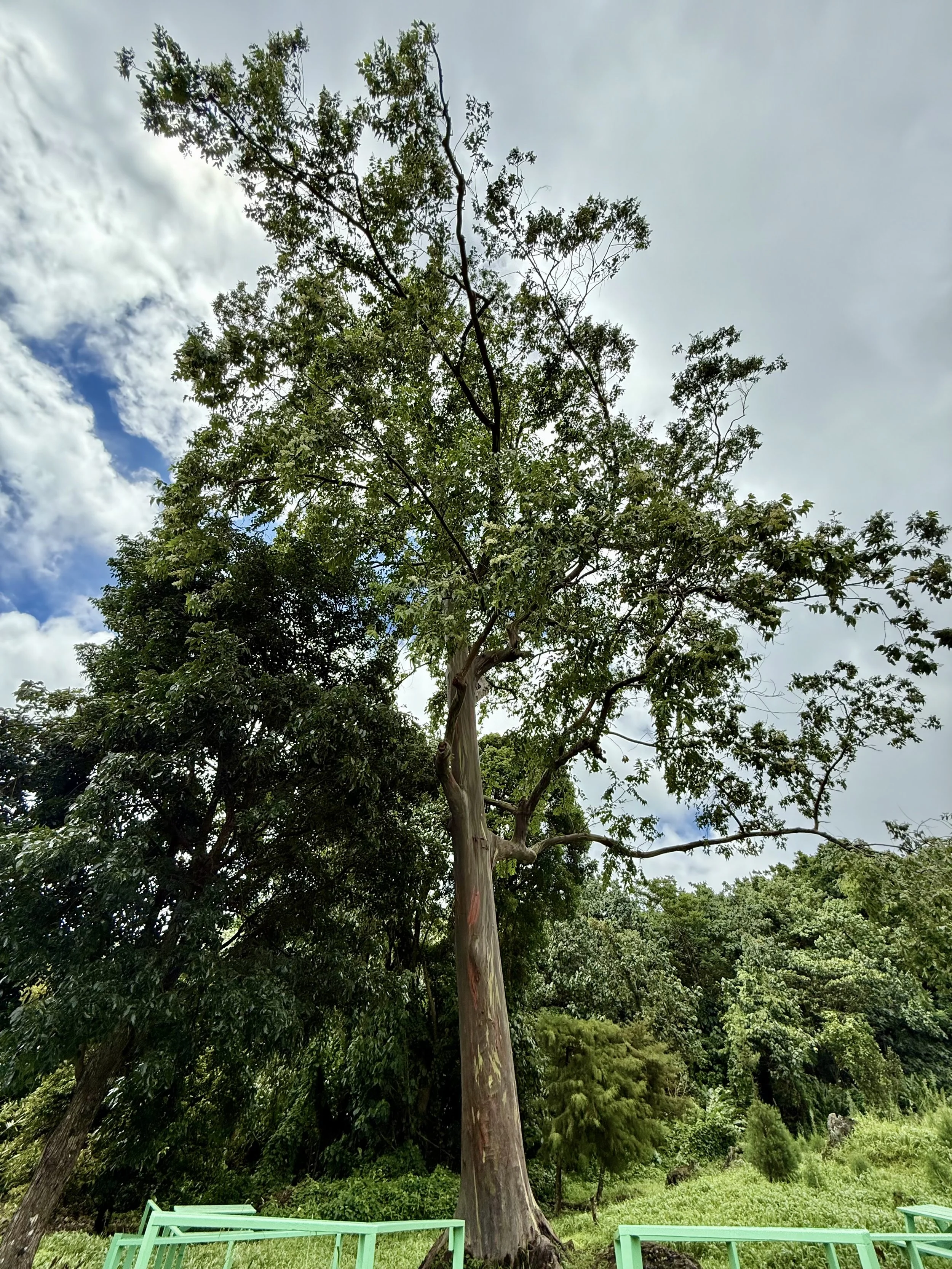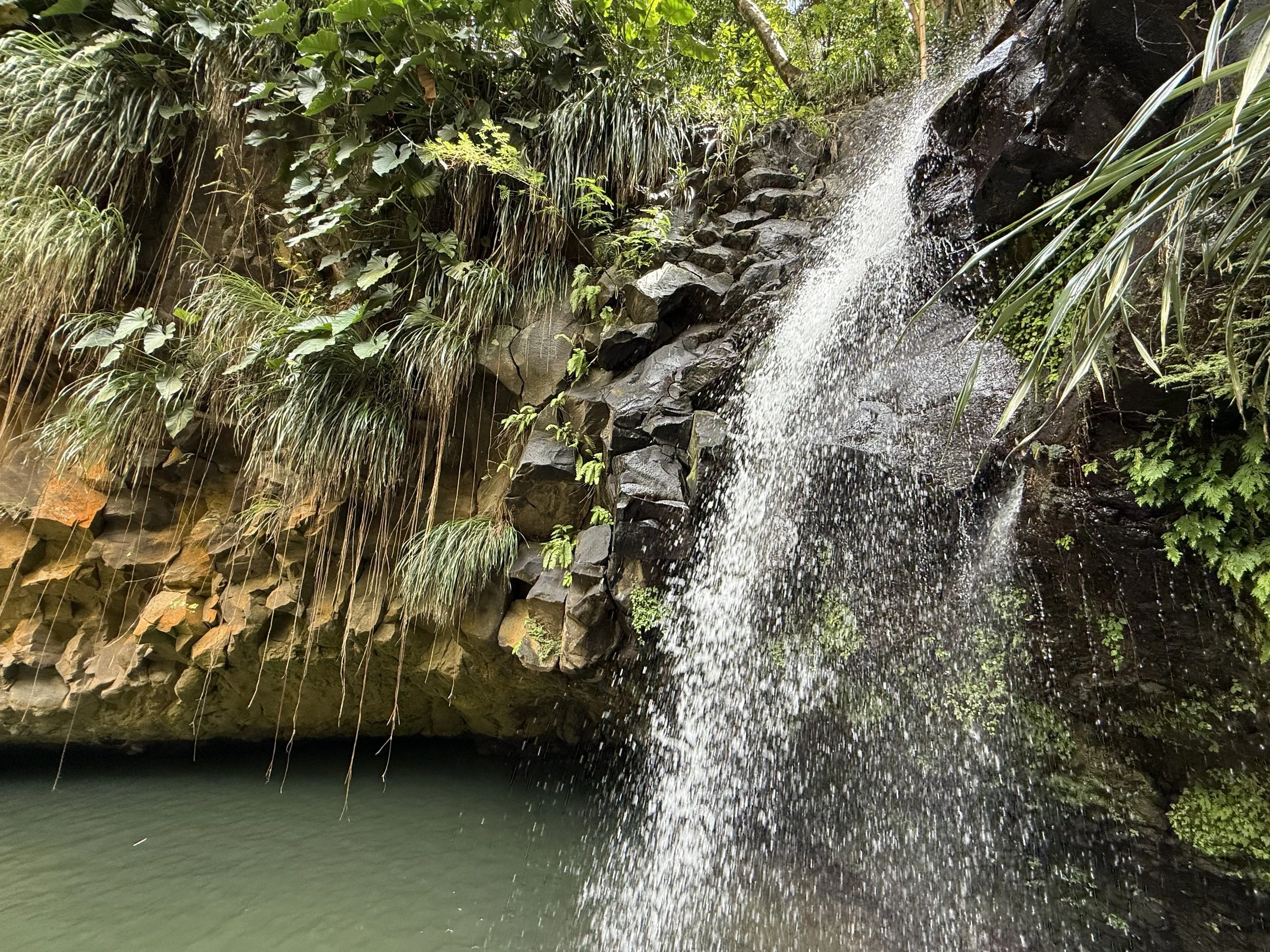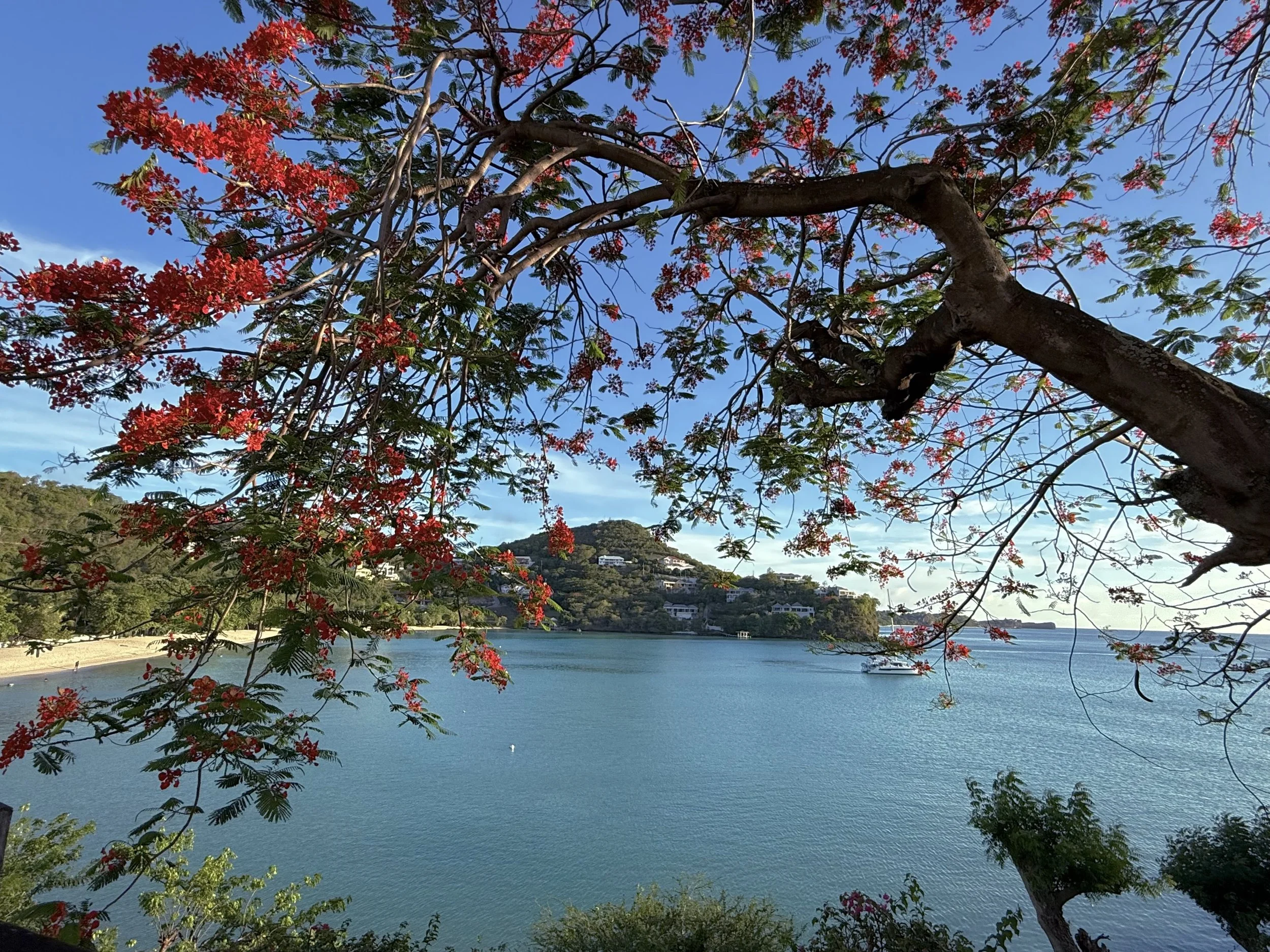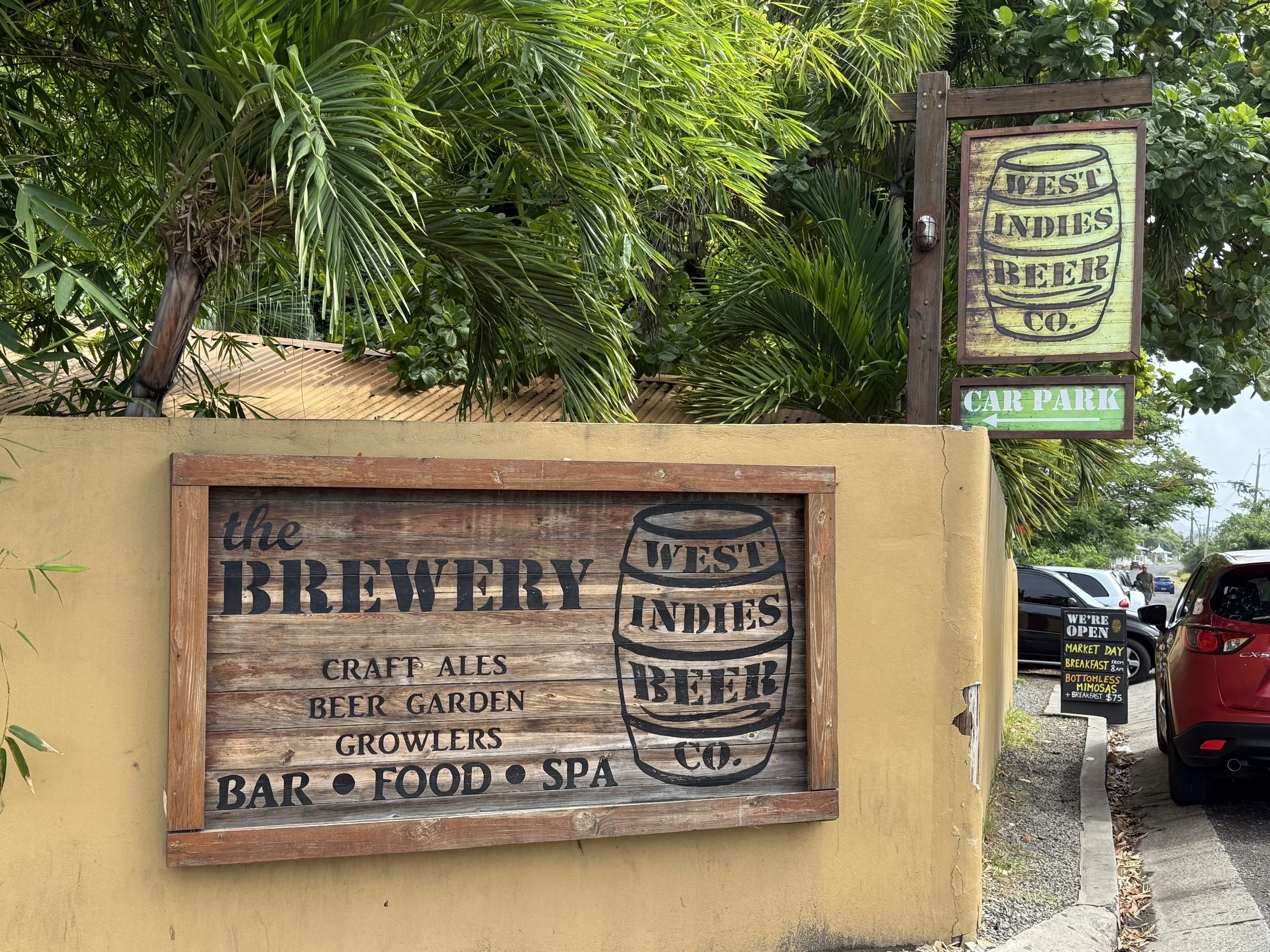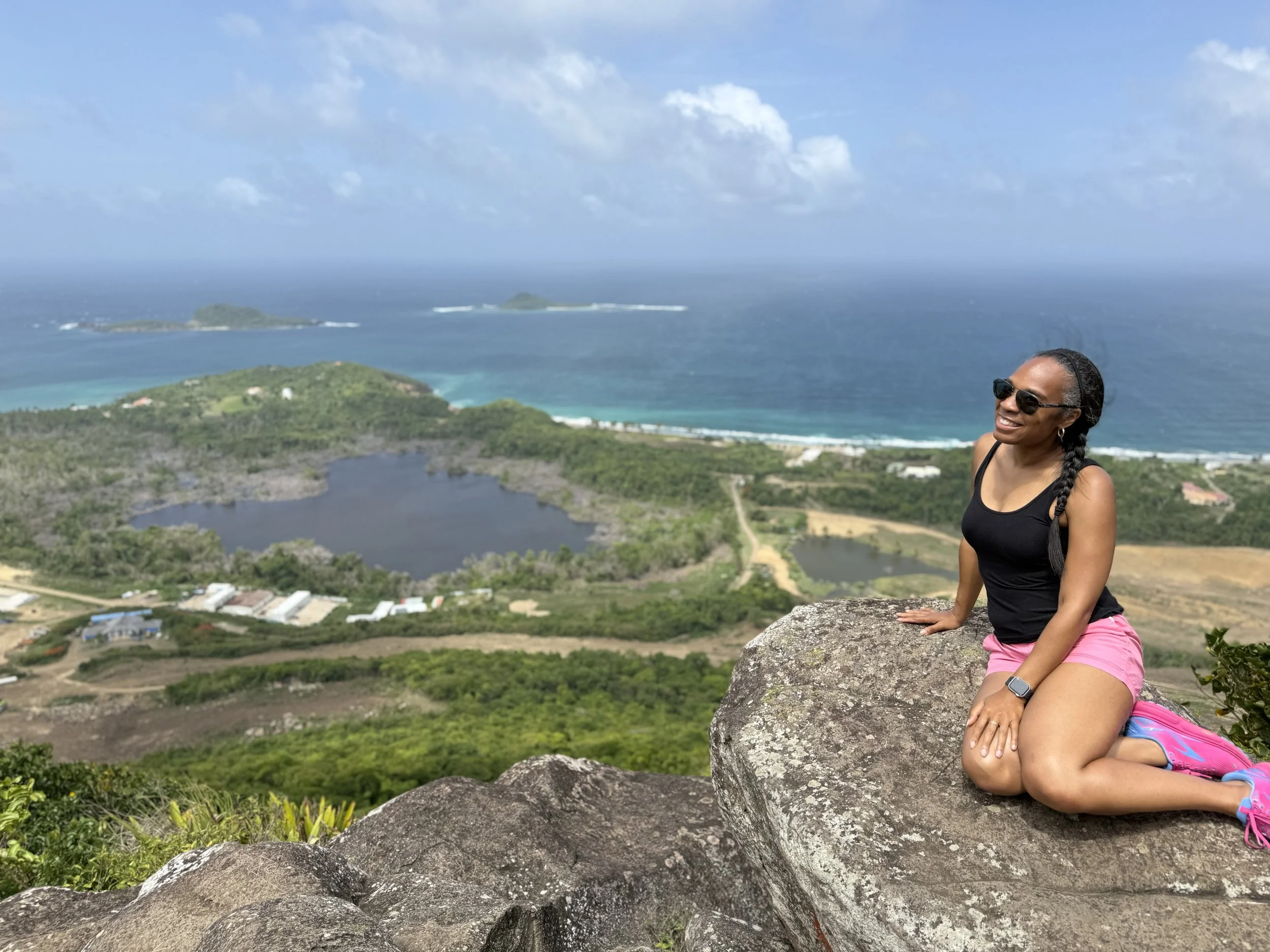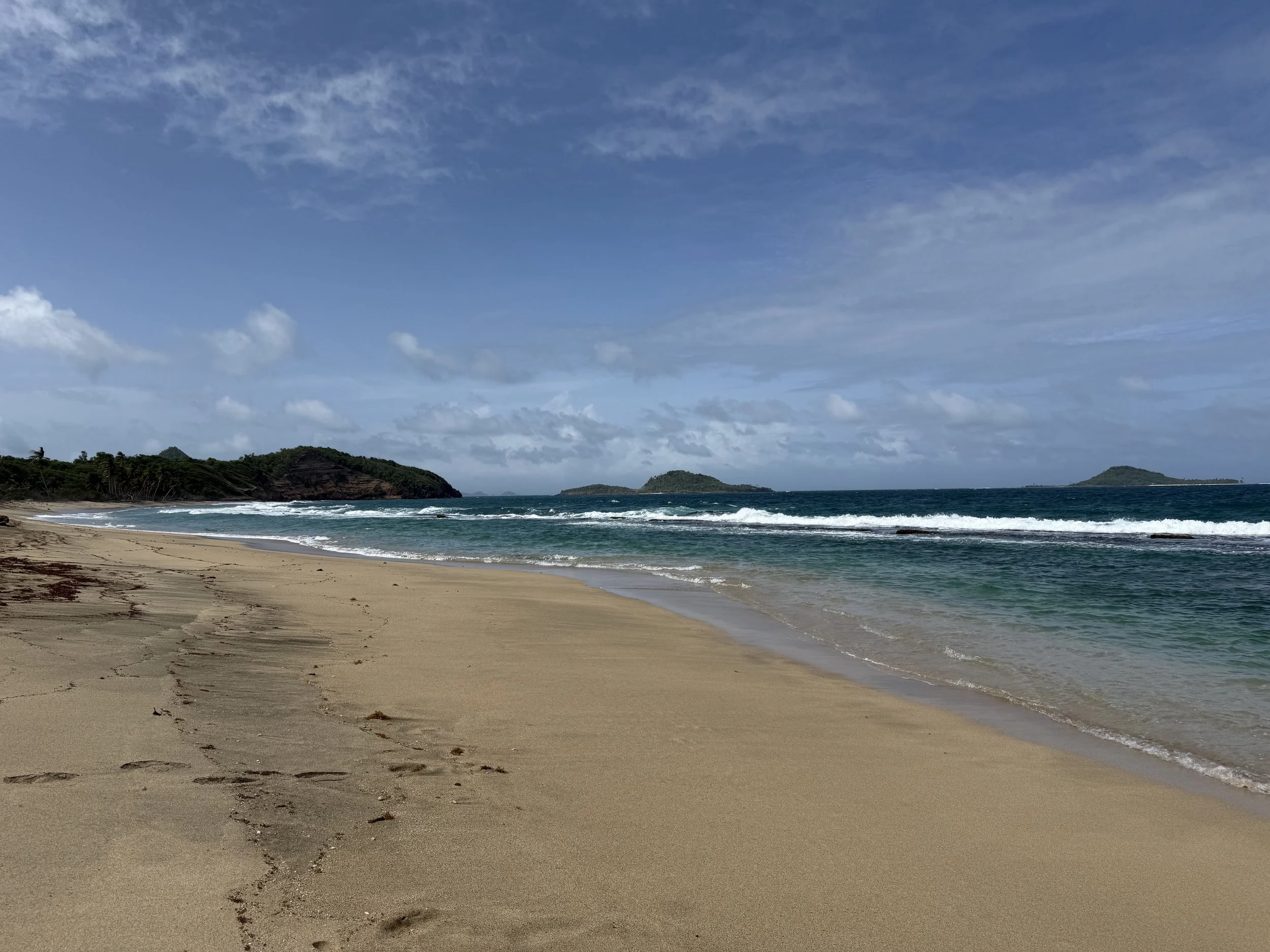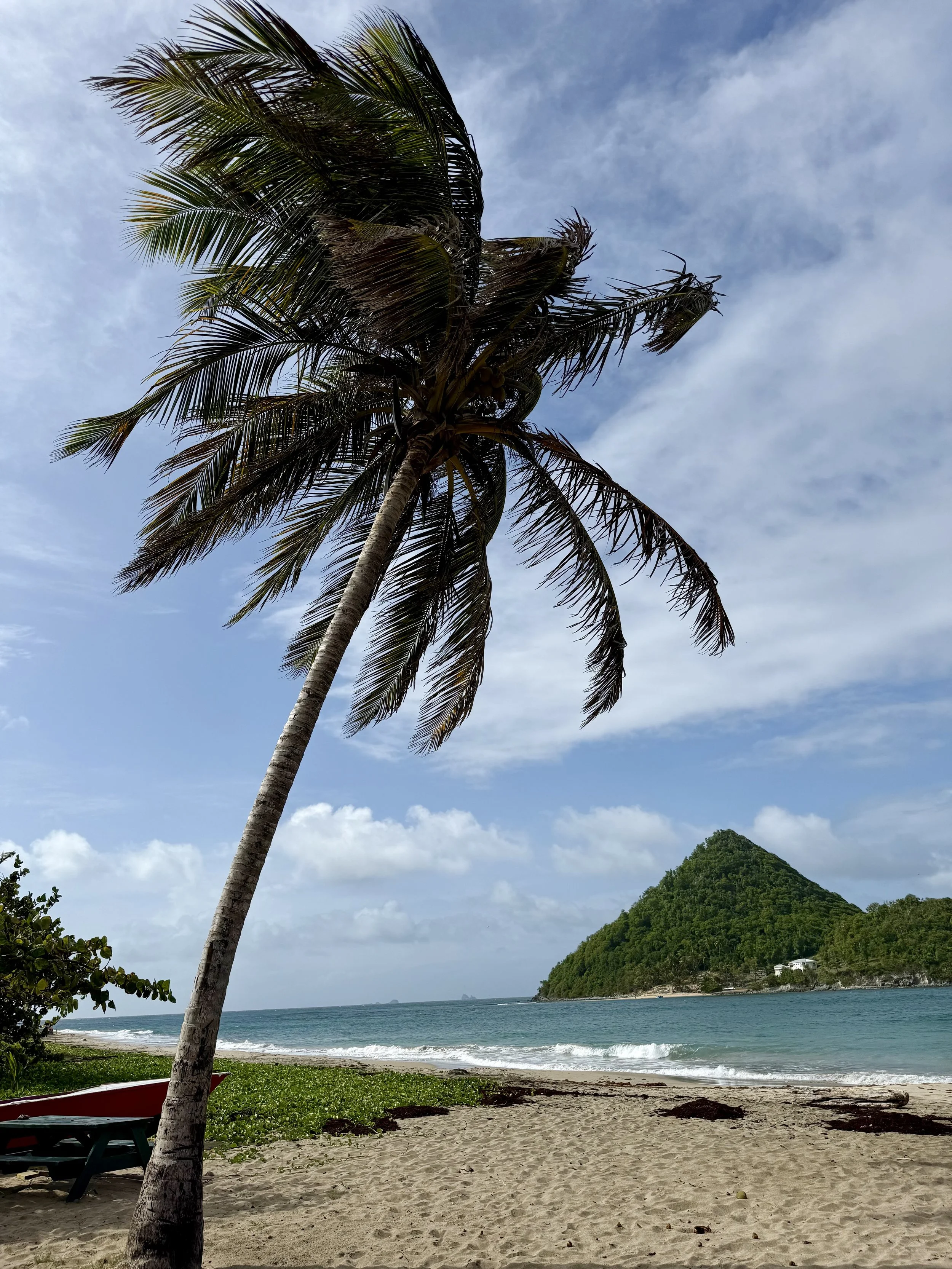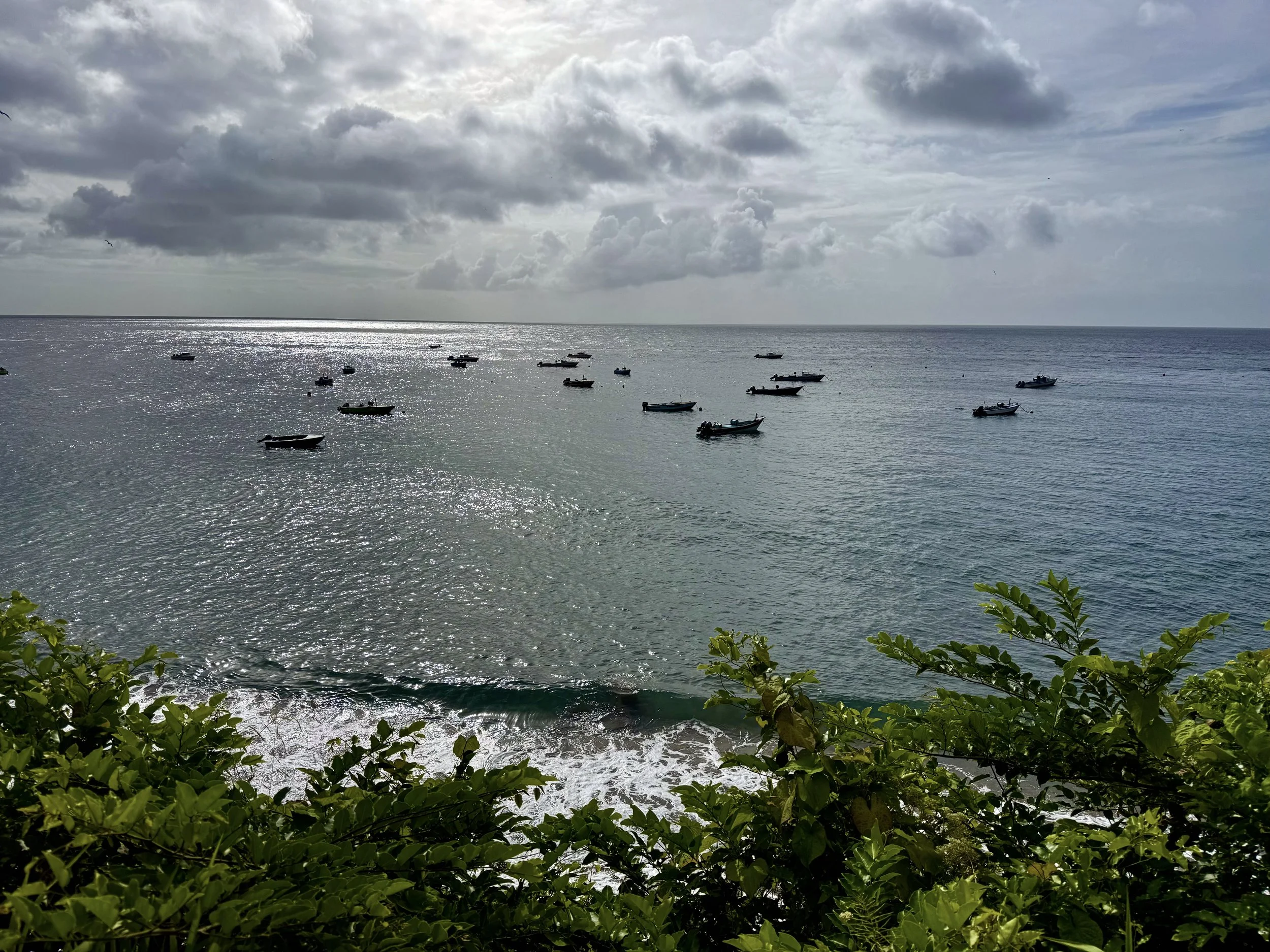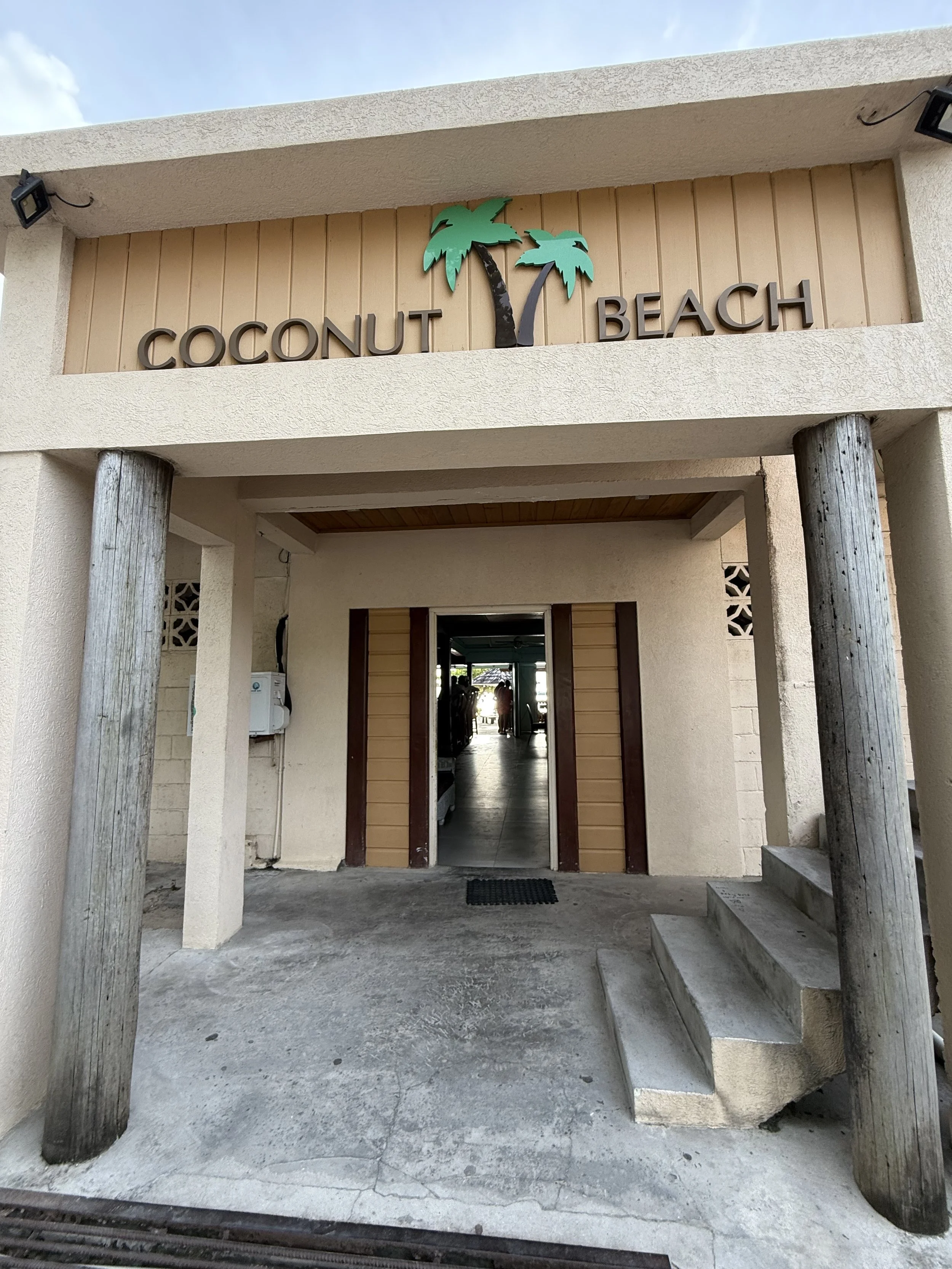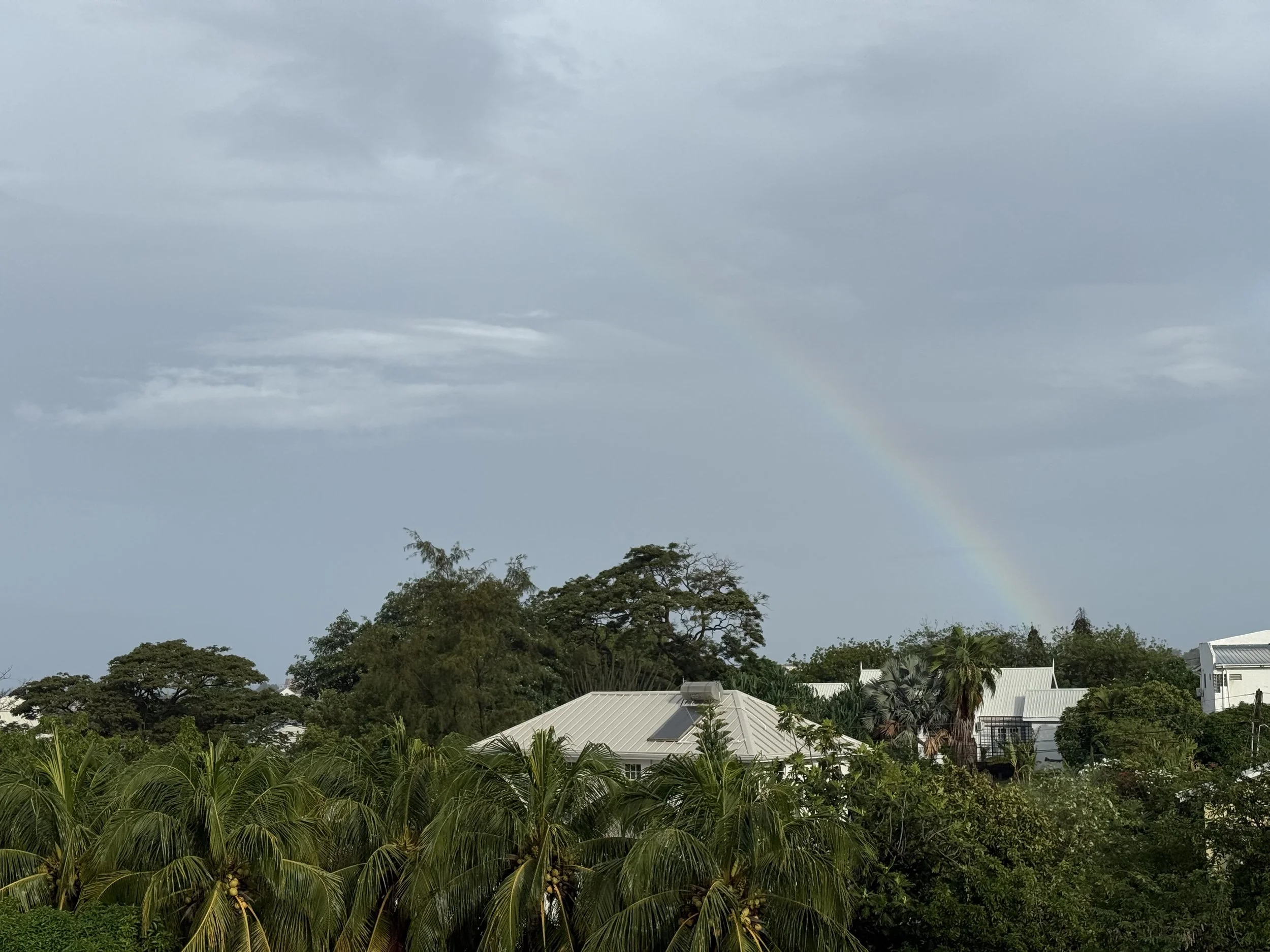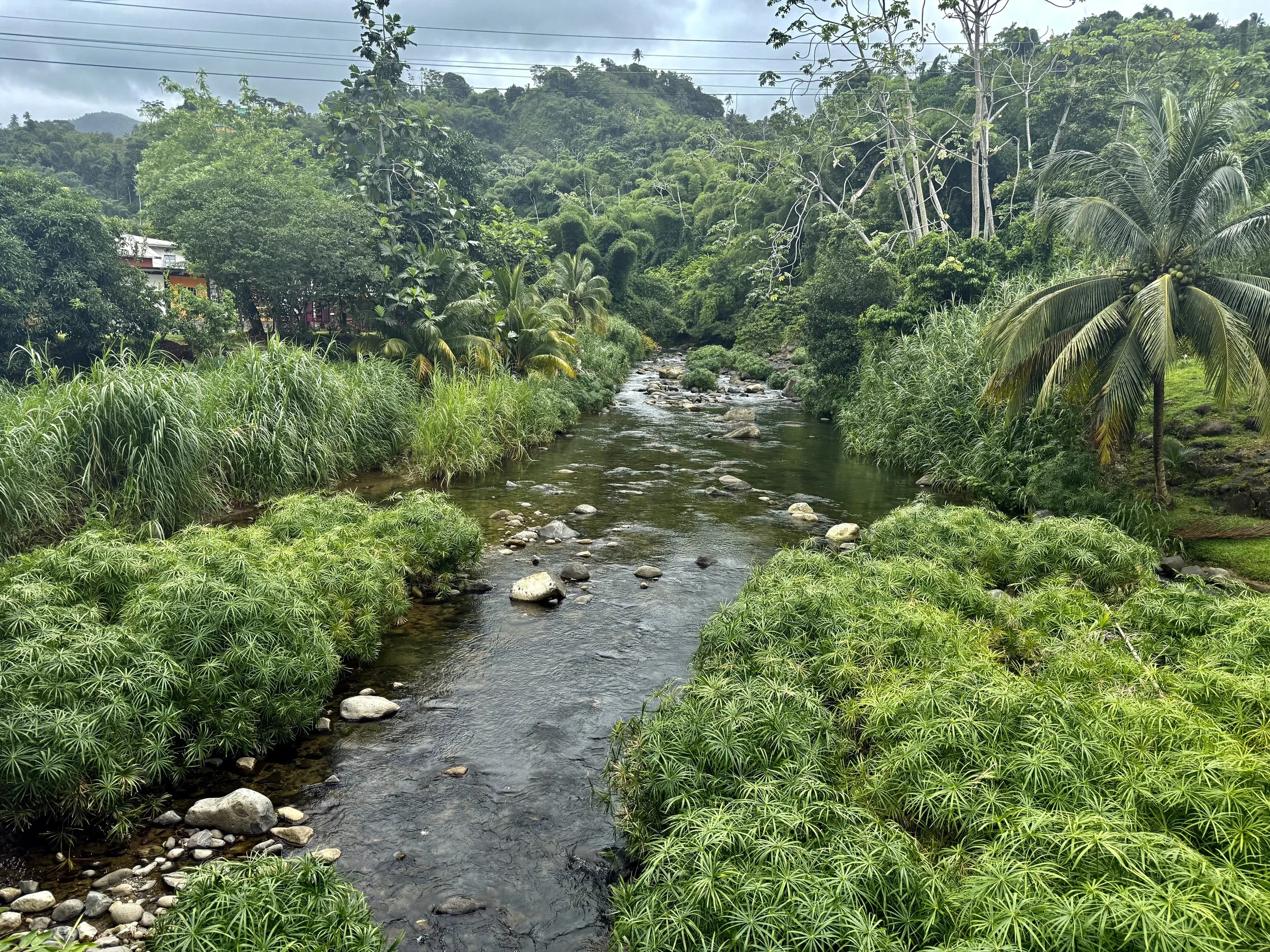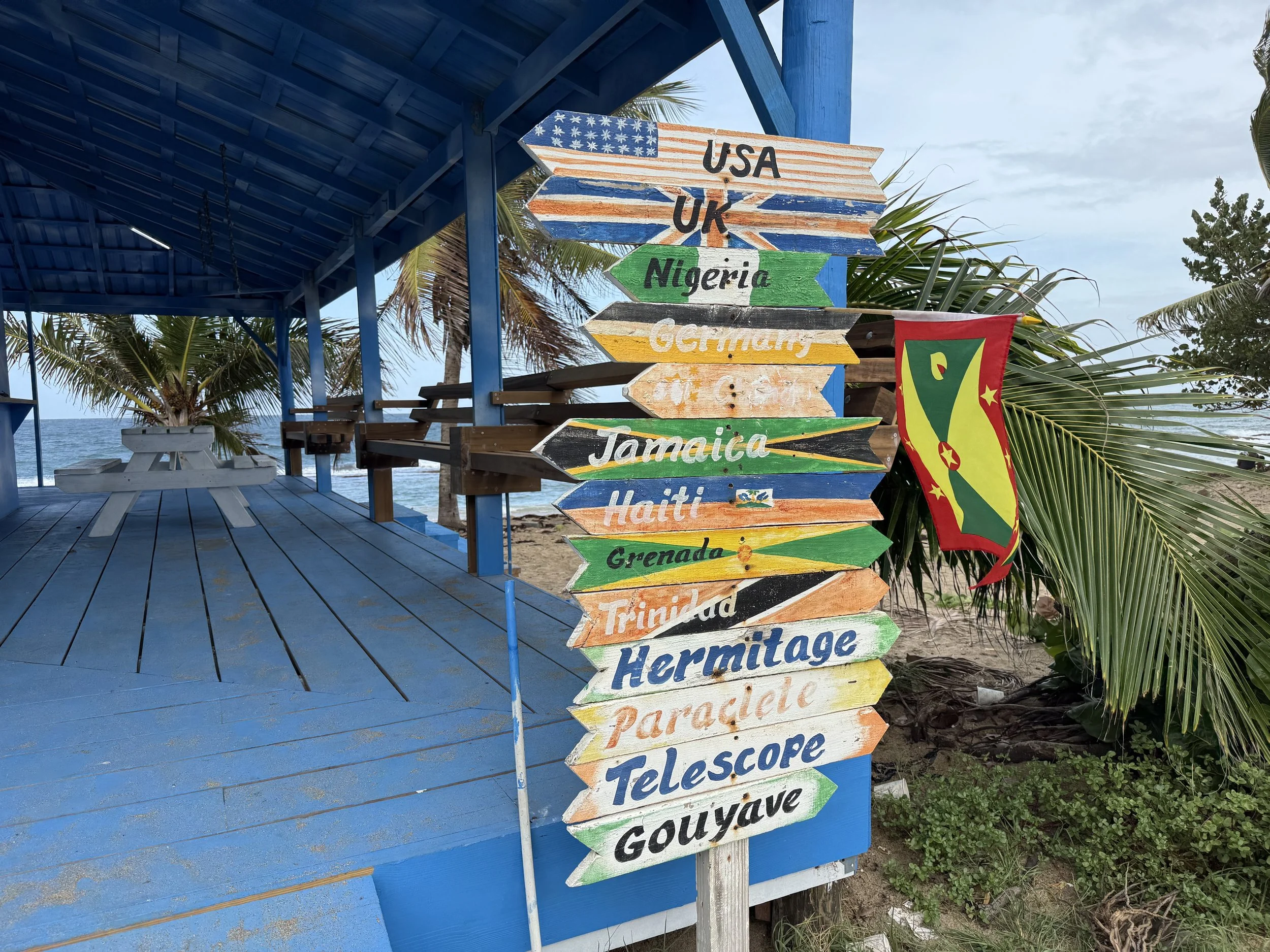2 Days in Grenada: Spice Markets, Scenic Drives, and Seaside Sunsets
I flew into Maurice Bishop International Airport (GND) from Trinidad and caught a taxi straight to Mandela Court Hotel in Lance aux Épines. It’s a quiet, mostly residential area—close enough to beaches and restaurants without being caught in the crowds. The hotel itself is elegant and understated, with Mediterranean-style architecture, soft pastel walls, and tall windows that let in plenty of light. My suite had a full kitchen and a comfortable living space, which made it feel more like a short-term apartment than a traditional hotel room. The central atrium is airy and bright, with polished tile floors, modern furniture, and a dramatic staircase that winds up both sides of the lobby. Out back, there’s a small pool surrounded by lounge chairs, perfect for cooling off between outings. It’s a relaxed, low-key spot—ideal if you want space and comfort without the resort bustle.
Day 1: Island Loop and Spice Lessons
That afternoon, I set out on a private tour around Grenada. We began at the bustling Saturday market in St. George’s, where vendors packed the sidewalks and traffic crawled through the crowd. A light rain had just started, giving the pavement a slick sheen as people moved at an unhurried pace under umbrellas. The stalls were filled with fresh produce, local spices, live chickens, household goods, and the occasional rack of knockoff sneakers. The air smelled faintly of herbs and something frying nearby. It was a grounded, everyday kind of busy—a window into real island life.
Our next stop was a neighborhood spice shop. Grenada is known as “The Spice Island” and is one of the world’s top producers of nutmeg, cinnamon, and cloves. I got a quick demo, sampled raw spices, talked with the shopkeepers, and picked up a few things to bring home. It’s also where I learned about nutmeg syrup, which is used in local desserts and drinks.
From there, we passed a rainbow eucalyptus tree, then headed into the island’s mountainous interior. We stopped at Morne Qua Qua, the highest drivable point on the island, located near Grand Etang National Park. The lookout offers panoramic views of the rainforest and, on clear days, a glimpse of the coastline. I also walked a short trail out to Grand Etang’s crater lake, formed in the caldera of an extinct volcano. A lone mona monkey lingered near the trail—most likely hoping for snacks, though visitors are advised not to feed them.
We made a brief stop at Annandale Falls, a popular spot where visitors often swim or watch local cliff divers leap from the rocks. I didn’t do either—just took a short walk around, looked at the falls, and continued on.
I made a quick stop at Fort Frederick, perched on Richmond Hill just outside St. George’s. Built by the French in the 1700s, it’s one of the best-preserved forts on the island—and one of the few where the cannons face inland instead of out to sea, thanks to a history of surprise land attacks. The fort itself is relatively small, but the panoramic views are what make it worth the visit. From the top, you can see Grand Anse Beach on one side, the Carenage on the other, and the lush hills rolling inland. There’s no real signage to guide you, but admission is free, and you can wander around on your own. It’s a quiet spot, not crowded when I went, with a steady breeze and plenty of photo ops. If you’re driving, it’s a quick stop that doesn’t take more than 30–45 minutes unless you want to linger.
Later, I made a quick pass through Grand Anse Beach—a postcard-famous stretch of soft sand and turquoise water—but I didn’t linger. It was mid-afternoon and hot. I ended the day at La Plywood, a casual beachfront bar built from scrap wood, where I sat inside and watched the sun go down through the open walls. We listened to live music and ate fries and fish tacos. After sunset, the lights came on—and the bugs seemed to materialize from nowhere. The place was suddenly buzzing with small flying insects I couldn’t identify. To escape them, I took a walk along the beach and watched the stars come out as the waves slapped the coastline.
Day 2: Beach Loops and Back Roads
I started the morning with a walk to West Indies Beer Company, a laid-back brewpub that doubles as a community hangout. On Sunday mornings, it draws a steady mix of locals and expats—some there for brunch, others catching up over a drink. Formula 1 was playing on the TVs, and the bar was already half full by the time I arrived. I ordered an egg and cheese sandwich, which took its time coming out. No rush, though—the pace matched the atmosphere. Some folks were chatting at the bar, others sat in pairs or small groups at the outdoor tables. After eating, I strolled down to Lance aux Épines Beach, which was quiet and practically empty.
Later, I drove north for a hike up to the Welcome Stone—a steep, short climb that rewards you with wide, sweeping views over Levera National Park and the island’s northeastern coast. Definitely worth the stop.
Lunch was at Bathway Beach—a plate of chicken wings, fries, and an Angostura Chill (lemon-lime with bitters). There’s a public restroom, but it costs $1 EC to use, so bring change. Afterward, I walked along Levera Beach, a more rugged, undeveloped stretch of coast—less polished than Grand Anse but with plenty of natural charm.
One thing I liked about the beaches in Grenada is that they’re mostly populated by local people. Whether it was the quiet stretch at Lance aux Épines or the more open sand at Bathway, they came across as uncommercial and familiar. Most of the top destinations here are beaches, and you can tell they’re part of everyday life, not just set up for tourists.
The drive back followed the winding western coastal road, cutting through quiet fishing villages tucked between the hills and the sea. At one point, we pulled over to take a photo of brightly painted boats bobbing in the water. Nearby, a group of kids was playing along a stretch of black sand beach—tumbling in the sand and tossing each other into the air to land backflips. I smiled at its innocence and simplicity.
Dinner was at Coconut Beach Restaurant, right on the water—fresh seafood, relaxed atmosphere. I ate stewed chicken while watching people play in the water and a few late-afternoon speed boaters getting a last lap in. As the sun began to sink below the horizon, I headed back to the hotel. The next day, I’d be heading home.
Day 3: Rain, Rainbows, and Heading Out
I woke to the sound of wind and rain tapping against the windows—a steady downpour that lasted about an hour. When it finally let up, I opened the window and spotted a rainbow stretching over the trees. The rest of the morning was slow and quiet. I stayed in, packed up, and relaxed until it was time to check out. Then I called a cab to the airport—and just like that, my time in Grenada came to an end.
Quick Travel Notes:
• Currency: Eastern Caribbean Dollar (XCD), but USD is widely accepted. Expect change in EC.
• Driving: Left side. Roads are paved but narrow and winding.
• Taxis: No meters—fares are negotiated upfront. My ride from the airport to Lance aux Épines was $20 USD.
• Tours: A private full-day island tour cost about $100 USD, which included pickup, fuel, and stops anywhere I wanted.
• Tap Water: Safe to drink.
• Island Size: About 134 square miles. You can drive across in under two hours.
• Language: English.
• Electricity: 230V, UK-style plugs.
• Weather: Hot and humid year-round; rainy season runs June to November.
Other Places to Check Out (If You Have Time):
• Belmont Estate – A working cocoa estate with farm tours and local food
• River Antoine Rum Distillery – Home to Grenada’s strong overproof rum, made using a waterwheel
• Underwater Sculpture Park – Best accessed via snorkel or dive trip from Grand Anse or Molinière Bay
• La Sagesse Beach – Quiet, scenic beach with fewer tourists
• Gouyave Fish Friday – A local street party with fresh seafood and music (check if it’s running)

